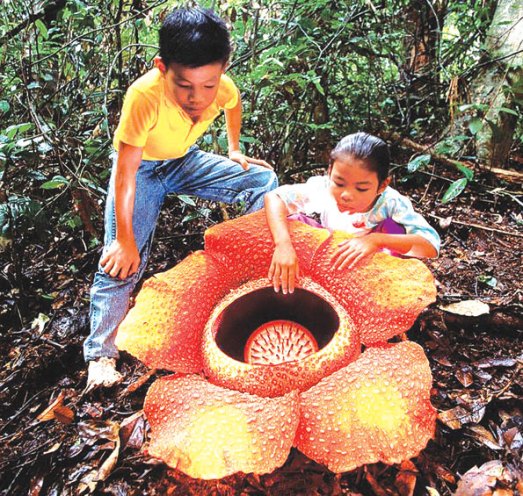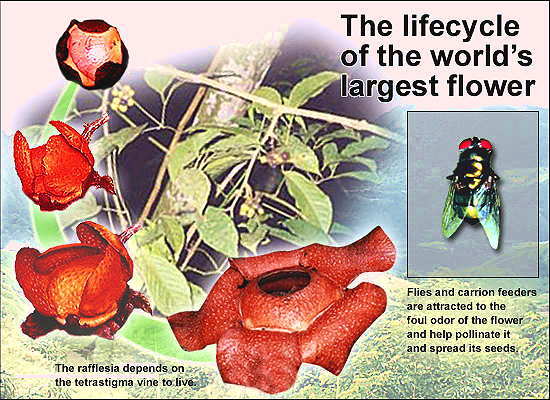You’d think that a plant called the “stinking corpse lily” would not be too pleasant to look at. However, this flower is aesthetically alluring. The troublesome element of Rafflesia arnoldii is their smell, which is similar to that of decaying meat. They use their odor to attract insects such as flies and other pollinators in order to perpetuate the species. Because these plants don’t produce chlorophyll, they can’t complete the entire process of the photosynthesis. As a result, their smell is the only way of survival. Unfortunately, only 10-20% of the seedlings make it. To make matters worse, it only blossoms from 3 to 7 days, every nine months.

As previously mentioned, Rafflesia arnoldii is the largest individually produced flower in the world. They have the potential to grow 3 feet across and weigh up to 25 pounds. Even though they lack any visible leaves, stems or roots, they are still considered vascular plants. Their buds are often used for traditional medicine, such as promoting delivery and recovery during and after childbirth. They are also used as an aphrodisiac. None of these uses are chemically proven, but these plants are an iconic symbol of southeast Asia, particularly Indonesia, and have a superstitious meaning surrounding them.

This species is endemic, meaning that it is unique to the defined geographic location of southeastern Asian rain forests. Rafflesia arnoldii are parasitic plants that live on the vines of Tetrastigma, a genus of plants in the grape family. They obtain nutrients and water from their hosts.

Rafflesia arnoldii are listed as critically endangered, and there are a variety of reasons for this. As mentioned above, only one-fifth of their seedlings go on to be successful, their buds take months to develop, and the duration that they are in blossom is extremely short. Additionally, the flowers are unisexual, meaning that successful pollination only occurs when the pollinators have traveled to both the male and female plants. Because of the uniqueness of this plant, they garner a lot of attention by tourists which often results in disturbed bud production. Eco-tourism is trying its best to raise awareness and increase conservation efforts in the hopes of saving these plants.

References
10 of the World’s Strangest Plant Species